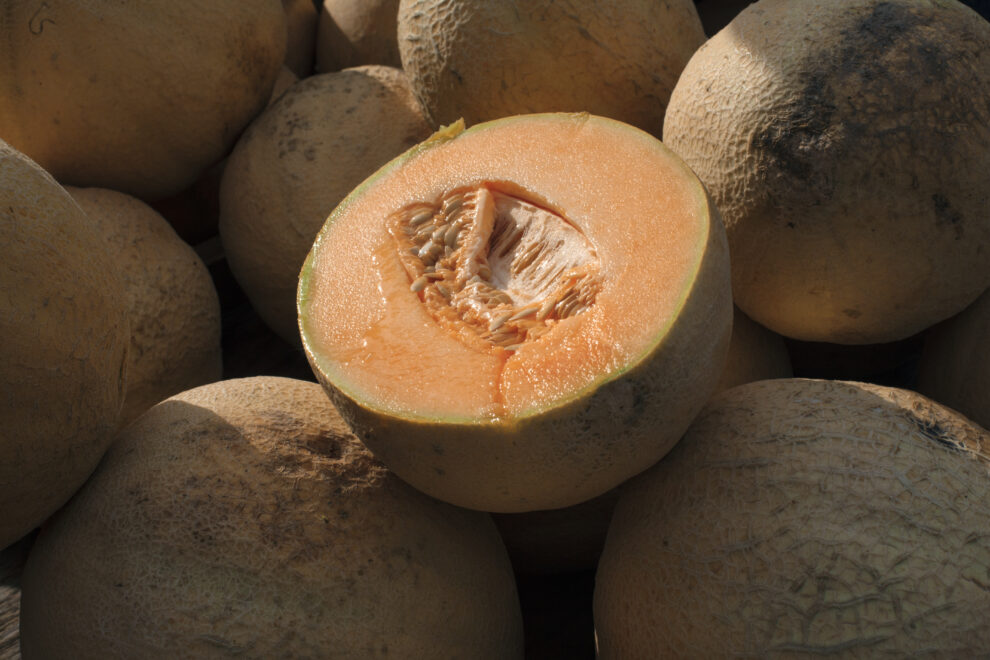Two Minnesotans have died from an outbreak linked to tainted cantaloupe and fresh-cut fruit medleys.
A nationwide foodborne salmonella outbreak that has killed two people in Minnesota has not faded away as hoped, with two additional infections linked to the tainted fruit reported this week.
Now totaling 15 infections in Minnesota, the growing tally suggests that risks persist, despite the identification of cantaloupe and fruit medleys responsible for the illnesses. The latest state total is one higher than Thursday’s update from the Centers for Disease Control Prevention. Either way, Minnesota has the most cases in an outbreak that has stretched to 117 illnesses in 34 states.
If the fruit responsible for salmonella poisoning has been recalled from store shelves and cafeterias, then newly confirmed cases suggest it might have cross-contaminated other products during bulk processing or distribution, said Carlota Medus, an epidemiologist in the Minnesota Department of Health’s foodborne diseases unit.
“People really need to be cautious and be aware that we haven’t gotten to the bottom of this,” she said. “I mean, the original sources have been recalled and out of the system for a while now. We should be getting to the point” where no new infections emerge.
About 800 to 900 illnesses from salmonella bacteria are reported to Minnesota health authorities each year, and most involve the classic symptoms of diarrhea, stomach pain, fever and nausea. Usually, one in four known cases involve hospitalizations, but the rate in this outbreak is above one in two.
The severity of this outbreak owes to a rarer, Sundsvall strain of salmonella that is more likely to get into the bloodstream and cause complications, Medus said. “I have seen it once before in the 25 years I’ve been here.”
Minnesota is known for the doggedness of its foodborne surveillance, including its “Team Diarrhea” of public health workers and students who interview sickened people to pinpoint the origin of their illnesses. In this outbreak, Medus said Minnesota likely has the nation’s highest number of cases because it ended up with more of the tainted fruit, rather than because it has done a better investigation.
“It’s probably just a reflection of where the melon ended up,” Medus said.
The U.S. Food and Drug Administration announced the first cantaloupe recall in this outbreak on Nov. 9. Local cases were identified Nov. 13 after testing at the state public health lab found that five patients were sickened by identical salmonella strains.
Minnesota advised people four days later not to eat or buy cantaloupe produced in Mexico with Malichita labels or stickers. The recall has expanded to include the Rudy brand as well as cantaloupe cubes or fruit medleys sold in some states with the Vinyard, ALDI, Freshness Guaranteed and RaceTrac brands.
Investigators in Minnesota are still determining whether other cut-up fruit products caused some of the local infections. Medus urged children, older adults and people with compromised immune systems to take particular caution before eating cantaloupe.
The state has offered limited details about the cases and two deaths, other than that they occurred in the Twin Cities and central Minnesota and tended to involve children and older adults. The disparate age range had investigators thinking early on that the tainted food source was common to public schools and elder-care facilities.
Only one of three early patients interviewed recalled eating cantaloupe, but their salmonella strains were quickly matched to others being reported across the U.S. and in Canada.
Genetic sequencing has helped to quickly identify the sources of outbreaks and to link findings across states and countries, Medus said. Investigations still rely on public cooperation, though, including sickened people volunteering partial credit card or reward card numbers so public health workers can look up their recent grocery purchases.
The process has grown complicated, because some people are wary of public health efforts after the COVID-19 pandemic and some stores have started demanding entire rather than partial credit card numbers to look up purchase histories, Medus noted.
“We do rely on the public trust, that we truly do keep the information that they give us private, that we’re only going to look at things that matter for [investigating] the outbreak,” she said.






























